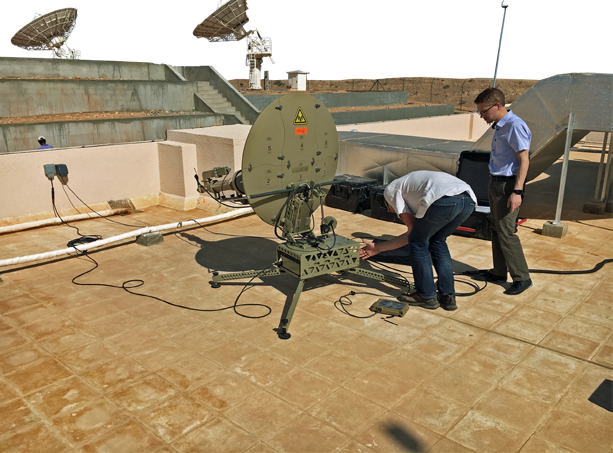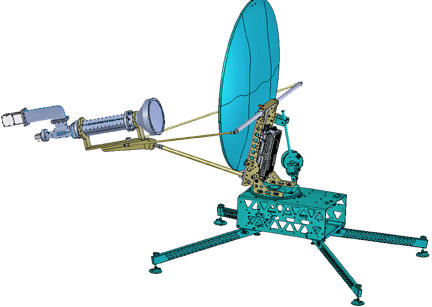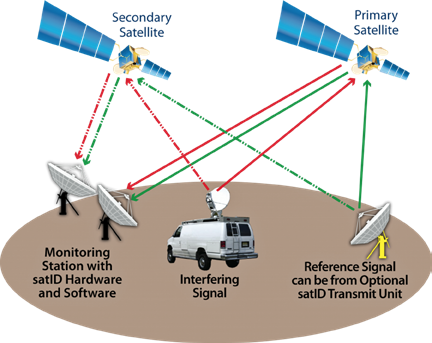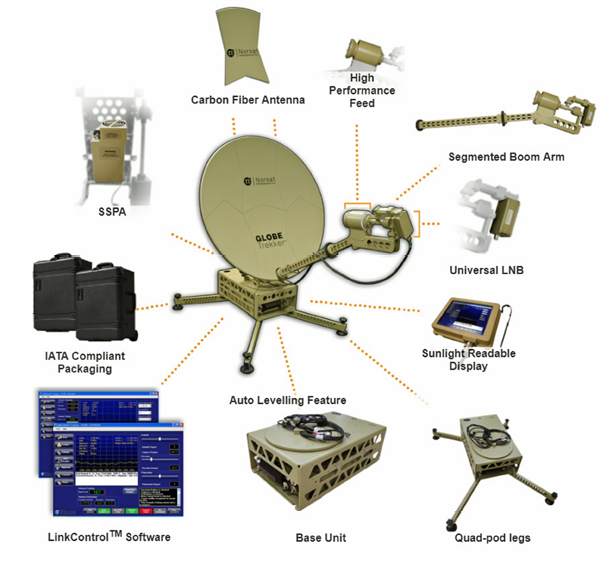Norsat was selected to design a satellite terminal for Kratos Communications SAS’ geolocation system, satID®, a component which would then be a part of a larger system called the Advanced Space Radio Monitoring System (ASRMS).

Norsat terminal in use by Kratos GT in Oman, Jordan.
The final design was a customized GLOBETrekker with multi-band functionality that included Ka-, Ku-, X-, C-, and low Ku-bands.
Kratos Communications SAS selected the GLOBETrekker due to the unit’s multiband functionality and intuitive user interface and software, LinkControl, which makes satellite acquisition easy to acquire. Kratos Communications SAS was extremely satisfied with the quality of the final product and its ease-of-use.
The GLOBETrekker successfully geolocated C- and Ku-band signals and passed the Site Acceptance with the end-user. Overall, Norsat was able to effectively customize a product to meet Kratos Communications SAS’ unique needs and provide them with their desired end-product.
Background
Kratos delivers integrated end-to-end enterprise solutions across the ground station to communication service providers.
For this project, Norsat worked with Kratos’ European subsidiary, Kratos Communications SAS, which is based in Toulouse, France. Kratos is well-known as the global provider of products, systems and services for satellite command and control, telemetry and digital signal processing, data communications, enterprise network management, and communications information assurance.

Figure 1. Visual of the custom multiband GLOBETrekker terminal built for Kratos Communications SAS.
Problem
Kratos Communications SAS was looking to source a multi-band satellite terminal which would be used with their geolocation system, satID®, a component within a larger system called the Advanced Space Radio Monitoring System (ASRMS). The purpose of Kratos Communications SAS’ project was to find users who operate satellites improperly, which includes transmitting on another user’s frequency, intentionally jamming signals, or interfering with signals.
Most satellite interference is unintentional and often results from human or user error including incorrect antenna pointing, too much uplink power, and misaligned satellite terminals.
To mitigate satellite interference, a geolocation system can be used to locate the position of the interfering signal (please see Figure 2, below — a Visual diagram of a Kratos’ satID® Geolocation System. Image courtesy of Kratos and Kratos Communications SAS).
The satID® geolocation system locates interferences and also confirms the location of known signals. The objective of the multi-band satellite terminal is to transmit a reference signal between satellites on all surrounding frequency bands in order for the satID® geolocation system to better pinpoint the location of the signal.
Previously, Kratos Communications SAS used feedhorns with their geolocation solutions as they had a wider beam width than other options. However, with this specific project, Kratos Communications SAS discovered there were limitations and the previously-used feed horn could not be used for Ka-band.

Figure 2, below — a Visual diagram of a Kratos’ satID® Geolocation System. Image courtesy of Kratos and Kratos Communications SAS).
Kratos Communications SAS derived an alternative solution that would require a multi-band ground satellite terminal, a product that was not readily available on the satellite terminal market. Thus, they needed to find a satellite terminal manufacturer who could custom build a terminal that would work with the current satID® geolocation system and would also possess multi-band functionality.
Kratos Communications SAS had specific and unique requirements that only a few satellite terminal manufacturers could fulfill. The proposed ground terminal would transmit a hidden reference signal to the satellites which would help improve accuracy.
The end-user of the system needed to communicate with all surrounding satellites in all band spectrums — multi-band functionality was the major concern for this project. This request required a custom build from a capable terminal manufacturer with high technical knowledge.
Secondly, the satellite terminal needed to be lightweight, easy-to-deploy, reliable in remote environments and powerful enough to transmit a signal to two adjacent satellites. Kratos Communications SAS sourced potential satellite terminal manufacturers who could build this product on-time and on-budget.
Solution
Norsat International was one of two satellite terminal manufacturers that could provide Kratos Communications SAS with their desired product.

Figure 3. Breakdown of Features on Norsat’s GLOBETrekker terminal.
After due diligence was completed, Kratos Communications SAS deemed Norsat’s GLOBETrekker as the superior option due to the terminal’s potential for multi-band functionality and ease-of-use, all stemming from the GLOBETrekker’s one-touch user interface and LinkControl software.
LinkControl offers an intuitive and powerful set of tools for satellite communication professionals and amateurs and seamlessly integrates the various hardware and procedures into user-friendly steps. The easy-to-use software offers auto alignment and can acquire a satellite in less than five minutes.
Also offered are a variety of advanced satellite communication tools as well as full integration with modems, solid state power amplifiers (SSPAs), and other devices. The user-configured profiles of the system enabled operators to quickly shift satellites, equipment or systems in the field.
Kratos Communications SAS identified a need for a satellite terminal that would survive in remote and challenging applications. The rugged GLOBETrekker terminal was designed for durability and could perform in the most intense weather conditions. The structure of the terminal allows for the unit’s electronics to be elevated, well above any running water, mud or snow.
The terminal was customized to include multi-band capability to ensure operability with Ka-, Ku-, X-, C- and low Ku-bands, a key element in the final decision making process. The GLOBETrekker also allows for easy and fast switching, moving from one band to another in less than ten minutes. Norsat’s ability to manufacturer a custom product that would work with Kratos Communications SAS’ existing geolocation system saved valuable time and money.
Results
Once the GLOBETrekker was completed, a representative from Kratos Communications SAS visited the Norsat office for a four day training session on how to use the new satellite terminal.
The first and second day of training consisted of how to setup the complete system including all six frequency band kits, how to use LinkControl and a general overview on mechanical maintenance.
The final two days were the outdoor tests where the Norsat training team instructed a session on how to use the auto pointing system in the various kits. Final testing was conducted on the last day where the GLOBETrekker successfully passed the Factory Acceptance Test.
Kratos Communications SAS’ representative said that, “...our experience with Norsat was great and it was useful for us to do a Factory Acceptance Test at Norsat. We are very happy with the terminal and the end result.”
The end-user’s Site Acceptance of the GLOBETrekker also went extremely well. The terminal was successful in geolocating C-and Ku-band signals and in the acquisition of satellites in all bands with LinkControl.
Overall, Kratos Communications SAS and the end-user are satisfied with the quality and ease-of-use of Norsat’s custom GLOBETrekker terminal.
“The GLOBETrekker meets our needs for a transportable, easy to deploy and use, multiband reference emitter. Our experience with Norsat was great and we are very happy with the end result,” said Mathieu M. Sambuq, Project Manager, Kratos Communications SAS
A video detailing how to use LinkControl software is available for viewing at... https://www.youtube.com/watch?v=NE8eUEat-pY


